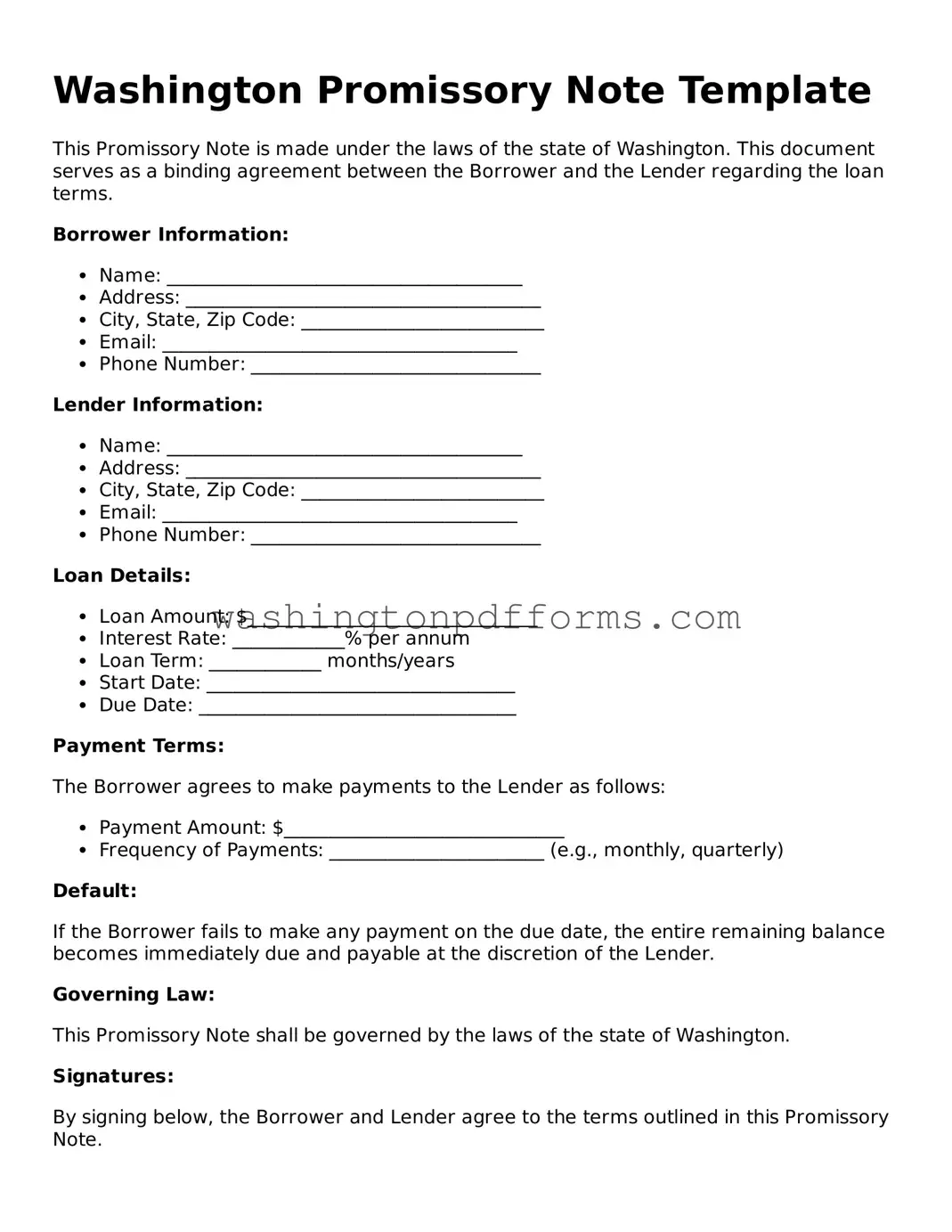Attorney-Approved Washington Promissory Note Template
A Washington Promissory Note is a legal document that outlines a borrower's promise to repay a specified amount of money to a lender under agreed-upon terms. This form serves as a crucial tool in financial transactions, ensuring clarity and protection for both parties involved. Understanding its components can help individuals navigate their lending and borrowing relationships more effectively.
Make My Promissory Note Online
